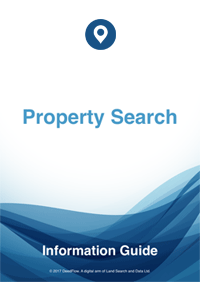Ownership of a Road, Path or Passageway
Contents
Overview
Ownership of a road, a path or a passageway is usually decided by referring to the Common Law, and in particular to certain presumptions that the Common Law allows. These presumption are, however, rebuttable if evidence to the contrary is shown.
Adoption of a Road
When deciding a dispute relating to ownership of the road, before considering whether or not a common law presumption is applicable, it would be prudent to ensure that the road has not been adopted by the highway authority. Where a road is adopted pursuant to s 263 of the Highways Act 1980 the surface of the road is then maintainable by the public, who are the benefactors of a road adoption.
An enquiry with the local highways department is a prudent first step involving any dispute relating to a road, a path or the like.
Meaning of Common Law Presumptions
Where an aspect of law is not governed by an Act of Parliament then one must turn to the Common Law for guidance. In considering evidence of a matter the common law allows for presumptions to be made where something is not known for certain, but is very likely to be true, thus shifting the burden of proof to the person challenging the presumption. This means that a common law presumption of ownership is true unless evidence to the contrary is shown to exist. Thus it is known as a rebuttable presumption.
Another type of common law presumption is a conclusive presumption, e.g. a presumption of minority in the case of a minor.
Presumptions of Ownership of a Road
There exists in common law a presumption relating to ownership of a road. This is known as the ad medium filum viae rule. This is a latin expression meaning “up to the middle line of the road”. A similar presumption “ad medium filum aquae” relates to an adjoining river or stream. Applying the former presumption to the road outside of your frontage, this would mean, subject to evidence to the contrary, that is you own to the middle point of that part of the road fronting your property.
Land Registry Title Plans
The Land Registry Title Plans do not show ownership of your property as extending beyond the curtilage of your property. To do so would cause confusion. In any event it is not necessary, because of the common law presumption of ad medium filum. If there is a dispute as to ownership of a road opposite your frontage that is not adopted, i.e. a private road, you can rely on the common law presumption that you are the owner, unless a person challenges this presumption and is able to provide evidence rebutting the presumption.
Where You Suspect there is a Different Owner
If you suspect there is a different owner to yourself, you can easily obtain evidence of the same by using a Roads and Alleyways Search to identify the section of road concerned and obtaining the Title Register for it. In most cases the Title Register would be your own, but if there were a different ownership then you would receive that person’s Title Register, which could be used to rebut a presumption that the road is owned by yourself.
Application for First Registration of part of a Road
If you are a developer wanting to show your ownership of a road within an estate owned by you, e.g. for a highways adoption application, you would need to support your application to the Land Registry with a statutory declaration referring to the ad medium filum rule. This will usually result in the grant of a possessory title to that part of the land relying on this presumption. Without such a registration, the highways department may refuse to agree to a road adoption.
Roads and Alleyways
Find out who owns roads, alleyways, pathways and passageways or find out if the road has been adopted by the local council using our simple mapping tools for fast results.
£34.95Title Register
The Land Registry Title Register holds data relating to the property ownership, purchase price, mortgage, tenure, covenants, rights of way, leases and class of title.
£19.95Title Plan
The Title Plan shows an outline of the property and its immediate neighbourhood, and uses colours to identify rights of way, general boundaries and land affected by covenants.
£19.95


